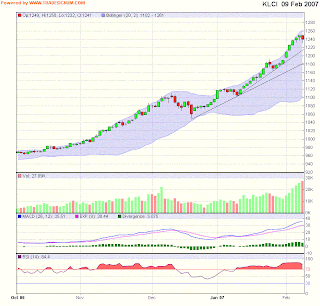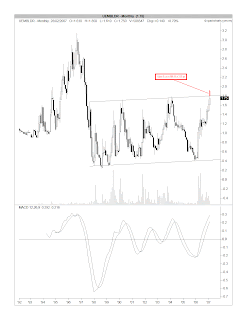Is there more to come? This morning, we have more bad news. The Dow average sank 416.02, or 3.3 percent, to 12,216.24. The S&P 500 retreated 50.33, or 3.5 percent, to 1399.04. The Nasdaq Composite Index dropped 96.66, or 3.9 percent, to 2407.86. This is the worst one-day performance for the U.S. stocks since 2001.
A look at the 2 charts below will reveal the severity of yesterday's sell-off. In just one day, our KLCI had broken below the 8-day SMA as well as the 20-day SMA (see Chart 1). It will probably test the 30-day SMA at 1210 level soon. From Chart 2, we can see that the KLCI had broken below the immediate uptrend line at 1265 level & nearly tested the next uptrend line at the 1220 level.

Chart 1: KLCI's daily chart overlaid with 8-, 20- & 30-day SMA

Chart 2: KLCI's daily chart overlaid with uptrend lines
Since our market sell-off has now been overtaken by external events, its recovery would be determined by the satisfactory resolution of these events. Our market may witness forced liquidation by local retail players as well as overseas funds, that have invested here. A break of the immediate uptrend line at the 1220 level may bring the KLCI to the psychological 1200 level. If that also failed, the KLCI may slide to its medium-term uptrend line at 1120, with some supports at 1190, 1170 & 1140.















































